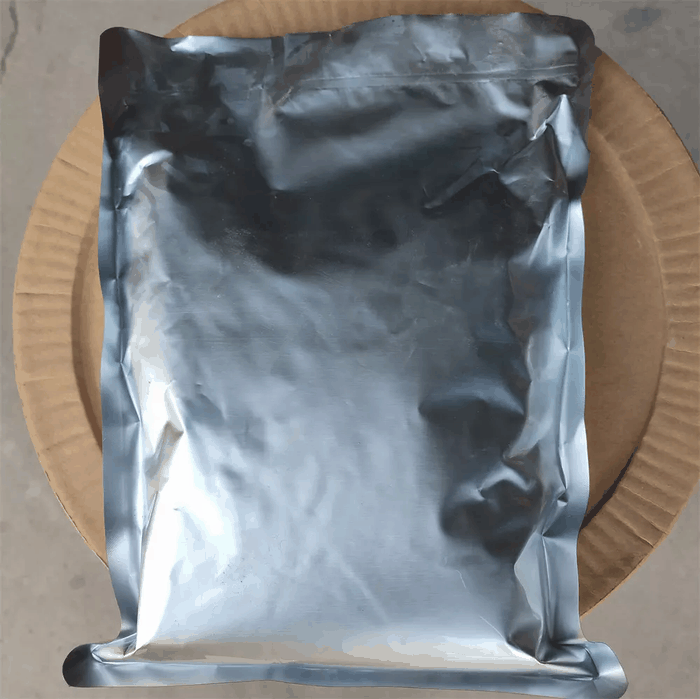Nicotinic acid N-oxide
- CAS NO.:2398-81-4
- Empirical Formula: C6H5NO3
- Molecular Weight: 139.11
- MDL number: MFCD00006201
- EINECS: 219-265-0
- SAFETY DATA SHEET (SDS)
- Update Date: 2024-12-18 14:15:30

What is Nicotinic acid N-oxide?
Chemical properties
BEIGE FINE CRYSTALLINE POWDER
The Uses of Nicotinic acid N-oxide
antilipemic
The Uses of Nicotinic acid N-oxide
Nicotinic acid N-oxide was used in a study to develop liquid chromatographic method for determination of free nicotinic acid and its metabolites in plasma and urine. It was used to synthesize and characterize peroxo complexes of vanadium(V) and molybdenum (VI) with nicotinic acid and nicotinic acid N-oxide.
Definition
ChEBI: Oxiniacic acid is an aromatic carboxylic acid and a member of pyridines.
General Description
Nicotinic acid N-oxide acts as a ligand and forms lead-carboxylate complexes having phosphorescent properties.
Properties of Nicotinic acid N-oxide
| Melting point: | 254-255 °C (dec.)(lit.) |
| Boiling point: | 255.04°C (rough estimate) |
| Density | 1.4429 (rough estimate) |
| refractive index | 1.5423 (estimate) |
| storage temp. | Inert atmosphere,Room Temperature |
| solubility | benzene: insoluble |
| form | Fine Crystalline Powder |
| pka | 3.19±0.10(Predicted) |
| color | Beige |
| Merck | 14,6941 |
| BRN | 115860 |
| CAS DataBase Reference | 2398-81-4(CAS DataBase Reference) |
| NIST Chemistry Reference | 3-Pyridinecarboxylic acid, 1-oxide(2398-81-4) |
| EPA Substance Registry System | 3-Pyridinecarboxylic acid, 1-oxide (2398-81-4) |
Safety information for Nicotinic acid N-oxide
| Signal word | Warning |
| Pictogram(s) |
 Exclamation Mark Irritant GHS07 |
| GHS Hazard Statements |
H315:Skin corrosion/irritation H319:Serious eye damage/eye irritation |
| Precautionary Statement Codes |
P280:Wear protective gloves/protective clothing/eye protection/face protection. P302+P352:IF ON SKIN: wash with plenty of soap and water. P305+P351+P338:IF IN EYES: Rinse cautiously with water for several minutes. Remove contact lenses, if present and easy to do. Continuerinsing. P332+P313:IF SKIN irritation occurs: Get medical advice/attention. P337+P313:IF eye irritation persists: Get medical advice/attention. |
Computed Descriptors for Nicotinic acid N-oxide
Nicotinic acid N-oxide manufacturer
Sintilla Medcoms Pvt Ltd
1Y
Phone:+91-8886733867
Whatsapp: +91 8886733867
product: Nicotinic acid N-oxide 98%
Dr. Silviu Pharmachem Pvt., Ltd.
1Y
Phone:+91-8390608382
Whatsapp: +91 8390608382
product: Nicotinic acid N-oxide 98%
ALS INDIA LIFE SCIENCES
1Y
Phone:+91-8977036379
Whatsapp: +91 8008166674
product: Nicotinic acid N-oxide 2398-81-4 98%
New Products
4-Fluorophenylacetic acid 4-Methylphenylacetic acid N-Boc-D-alaninol N-BOC-D/L-ALANINOL Tert-butyl bis(2-chloroethyl)carbamate 3-Morpholino-1-(4-nitrophenyl)-5,6-dihydropyridin- 2(1H)-one Furan-2,5-Dicarboxylic Acid Tropic acid S-2-CHLORO PROPIONIC ACID ETHYL ISOCYANOACETATE 2-Bromo-1,3-Bis(Dimethylamino)Trimethinium Hexafluorophosphate (6-METHYL-[1,3]DITHIOLO[4,5-b]QUINOXALIN-2-ONE INDAZOLE-3-CARBOXYLIC ACID 4-IODO BENZOIC ACID (2-Hydroxyphenyl)acetonitrile 4-Bromopyrazole 5,6-Dimethoxyindanone 2-(Cyanocyclohexyl)acetic acid 4-methoxy-3,5-dinitropyridine 2-aminopropyl benzoate hydrochloride 1-(4-(aminomethyl)benzyl)urea hydrochloride diethyl 2-(2-((tertbutoxycarbonyl)amino) ethyl)malonate tert-butyl 4- (ureidomethyl)benzylcarbamate Ethyl-2-chloro((4-methoxyphenyl)hydrazono)acetateRelated products of tetrahydrofuran








You may like
-
 Nicotinic acid N-oxide 98%View Details
Nicotinic acid N-oxide 98%View Details
2398-81-4 -
 Nicotinic acid N-oxide 2398-81-4 98%View Details
Nicotinic acid N-oxide 2398-81-4 98%View Details
2398-81-4 -
 Nicotinic acid n-oxide 95% CAS 2398-81-4View Details
Nicotinic acid n-oxide 95% CAS 2398-81-4View Details
2398-81-4 -
 Nicotinic acid N-oxide 2398-81-4 98%View Details
Nicotinic acid N-oxide 2398-81-4 98%View Details
2398-81-4 -
 Nicotinic Acid N-Oxide CAS 2398-81-4View Details
Nicotinic Acid N-Oxide CAS 2398-81-4View Details
2398-81-4 -
 Nicotinic acid N-oxide 98%View Details
Nicotinic acid N-oxide 98%View Details -
 NICOTINIC ACID N-OXIDE CAS 2398-81-4View Details
NICOTINIC ACID N-OXIDE CAS 2398-81-4View Details
2398-81-4 -
 Nicotinic acid N-oxide 98.00% CAS 2398-81-4View Details
Nicotinic acid N-oxide 98.00% CAS 2398-81-4View Details
2398-81-4
Statement: All products displayed on this website are only used for non medical purposes such as industrial applications or scientific research, and cannot be used for clinical diagnosis or treatment of humans or animals. They are not medicinal or edible.